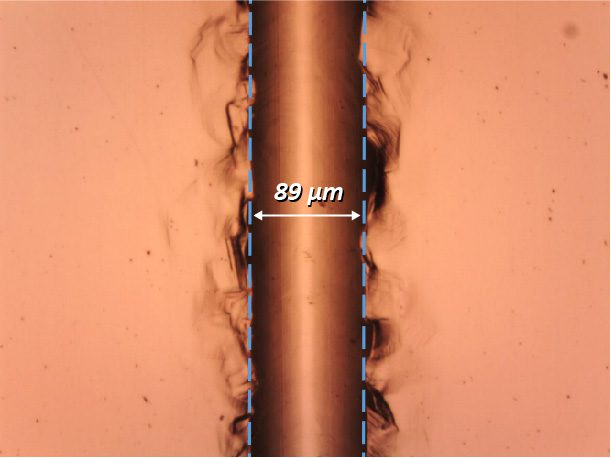INTRODUCTION
In general, hardness tests measure the resistance of materials to permanent or plastic deformation. There are three types of hardness measurements: scratch hardness, indentation hardness and rebound hardness. A scratch hardness test measures a material’s resistance to scratch and abrasion due to friction from a sharp object1. It was originally developed by German mineralogist Friedrich Mohs in 1820 and is still widely used to rank the physical properties of minerals2. This test method is also applicable to metals, ceramics, polymers, and coated surfaces.
During a scratch hardness measurement, a diamond stylus of specified geometry scratches into a material’s surface along a linear path under a constant normal force with a constant speed. The average width of the scratch is measured and used to calculate the scratch hardness number (HSP). This technique provides a simple solution for scaling the hardness of different materials.

















